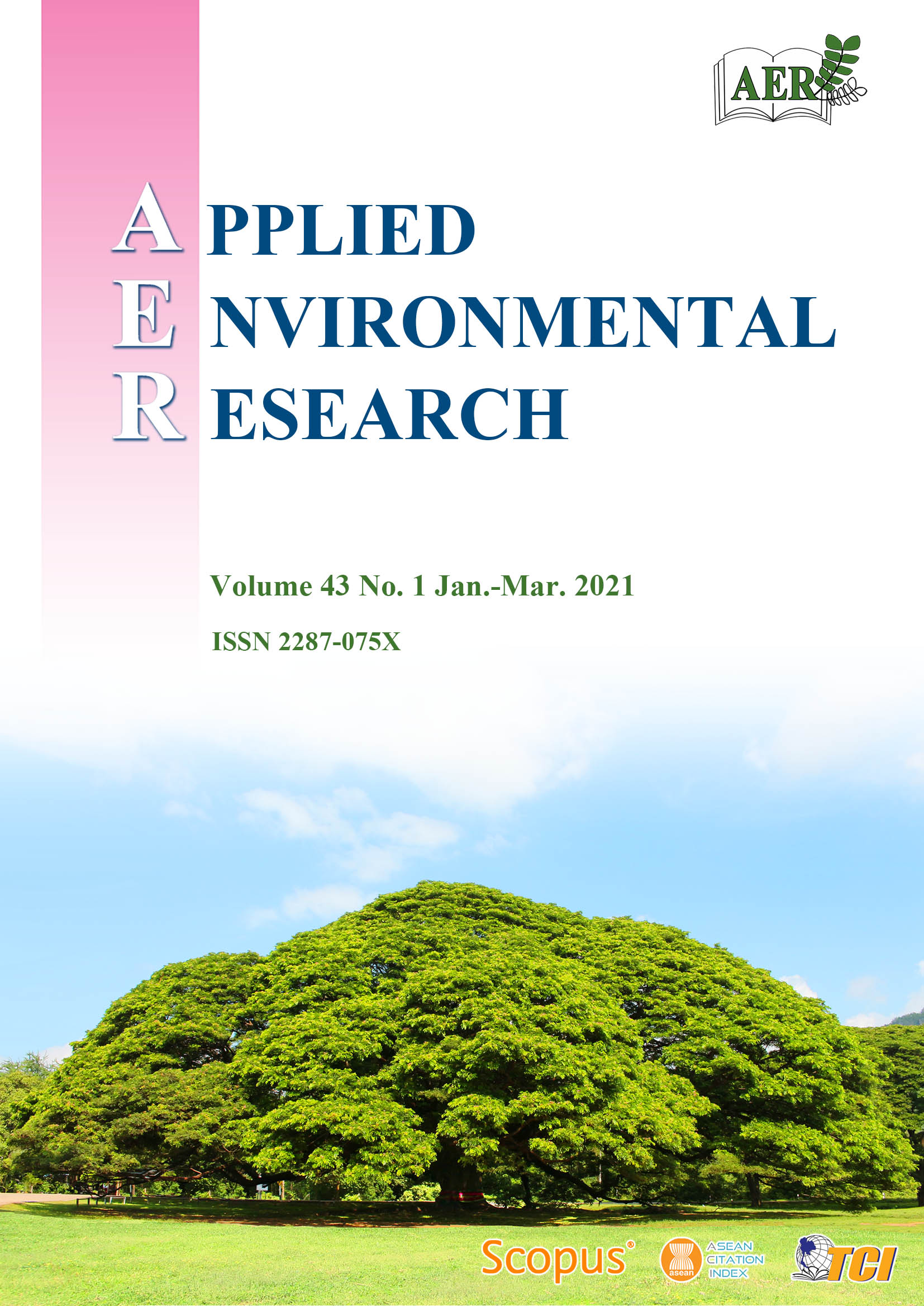Manganese Removal by Biofiltration Using Activated Carbon-barium Alginate-entrapped Cells: Morphology, Durability, Settling Velocity, and Treatment Efficiency
Main Article Content
Abstract
Occurrence of manganese in water supplies causes colored water and pipe rusting in water treatment and distribution systems. Moreover, consumption of manganese-contaminated water may lead to neurotoxicity in humans. Biofilters have the potential to alleviate the manganese issue through bio-oxidation, particle separation, and adsorption processes. Biofiltration performance can be enhanced by augmentation of the manganese-oxidizing bacterium entrapped in polymeric materials. This study aimed to investigate the potential of barium alginate-entrapped cells supplemented with powdered activated carbon (PAC) for manganese removal. Streptomyces violarus strain SBP1, an effective manganese-oxidizing bacterium, was selected. The experiments were divided into 2 parts, including 1) characterization of barium alginate bead and 2) manganese removal testing. Effect of PAC content (1, 5, and 10% w/v) in the entrapment material on bead morphology, bead durability, and settling velocity (relative to a filtration medium) was investigated. Micro-structural observation using a scanning electron microscope showed that the PAC was distributed through intra-porous structure of the beads. The PAC-supplemented barium alginate beads improved durability (up to three-time higher Young’s modulus values). The PAC-supplemented barium alginate beads gave similar settling velocity compared to a filtration medium. The manganese removal efficiencies by the PAC-supplemented beads (no cells) ranged from 48 to 53%. Based on barium alginate bead characterization and manganese removal performance, the bead with 5% PAC content was selected for cell entrapment. The investigation revealed that the entrapped cells achieved faster manganese removal rate than free cell system. The findings from this study indicated high potential of the entrapped cells for use in future biofilter applications.
Article Details

This work is licensed under a Creative Commons Attribution-NonCommercial 4.0 International License.
Published articles are under the copyright of the Applied Environmental Research effective when the article is accepted for publication thus granting Applied Environmental Research all rights for the work so that both parties may be protected from the consequences of unauthorized use. Partially or totally publication of an article elsewhere is possible only after the consent from the editors.

